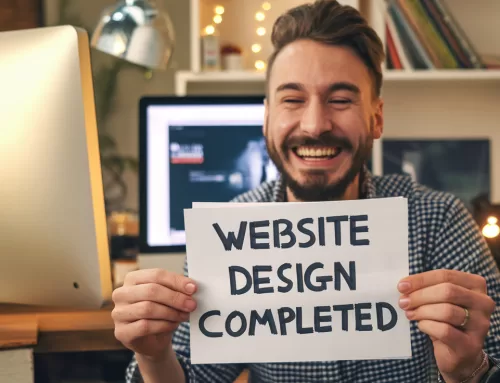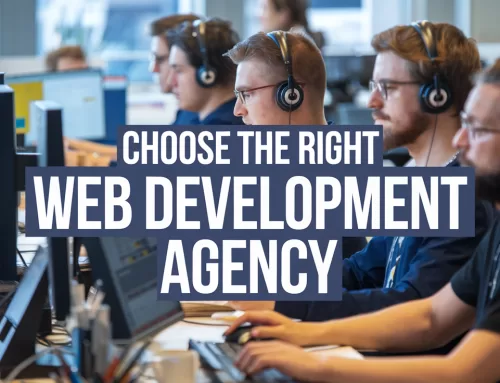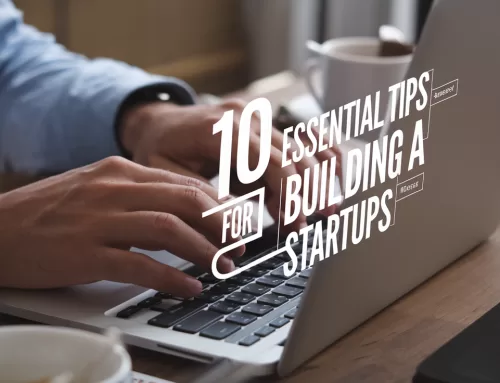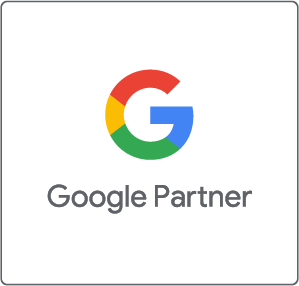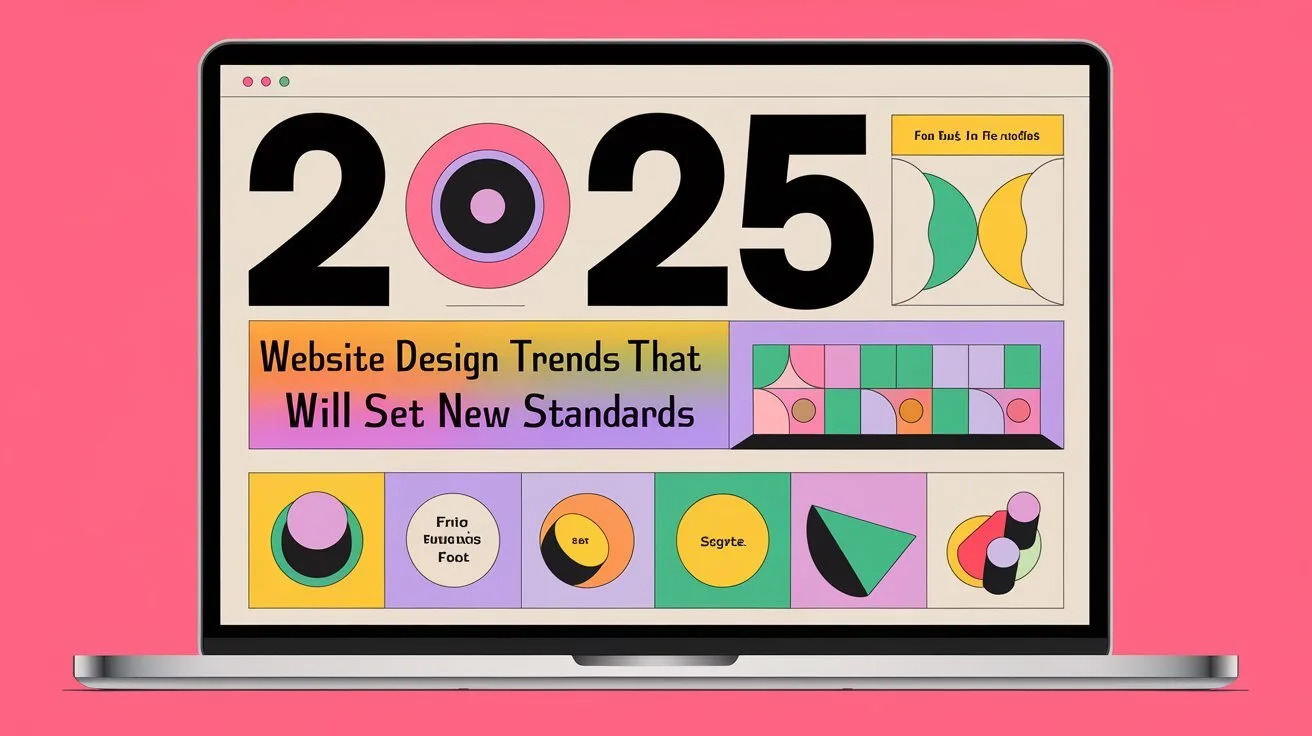
2025 website design trends are shaping the digital landscape. Websites are no longer just online brochures; they are powerful tools that influence brand perception, customer engagement, and conversions. With technology evolving rapidly, user expectations continue to rise. Businesses, designers, and marketers must stay ahead of the curve to remain competitive.
Web design trends are not just about aesthetics—they reflect changing consumer behaviors, technological advancements, and digital innovations. A well-designed website enhances user experience, builds trust, and improves business outcomes. Ignoring these trends can result in outdated designs, slow-loading pages, and a frustrating user experience that drives potential customers away.
For designers, staying updated means mastering new design principles, tools, and interactive elements. Marketers must understand how web design influences user behavior, engagement, and conversion rates. Business owners need to invest in websites that attract and retain customers while strengthening brand identity.
In 2025, several key trends will dominate the digital landscape. Minimalist layouts, dark mode, immersive animations, AI-driven user experiences, and bold typography are leading the way. These trends prioritize usability, accessibility, and engagement while ensuring a seamless browsing experience. From micro-interactions to AI-powered chatbots, web design is evolving to become more interactive and user-focused.
This article explores the most influential 2025 website design trends and how they are setting new standards. We’ll break down their significance, implementation strategies, and potential impact. Whether you’re a designer, marketer, or business owner, understanding these trends will help you stay ahead in an increasingly competitive digital space.
The Driving Forces Behind 2025 Web Design
These 2025 website design trends are driven by rapid technological advancements. Over the years, web design has evolved from static pages to highly interactive, AI-powered experiences. As user expectations continue to rise, businesses must stay ahead by adopting trends that improve both aesthetics and functionality. Moreover, with increasing competition online, brands can no longer afford to rely on outdated designs.
Evolution of User Experience
User experience (UX) has changed significantly over the last decade. In the beginning, websites were primarily text-based with limited functionality. However, as technology advanced, the focus shifted toward better navigation, mobile responsiveness, and visually engaging elements. Today, AI-driven personalization, micro-interactions, and immersive interfaces define the modern web.
Furthermore, users now expect dark mode, minimalistic layouts, and smooth animations to enhance readability and navigation. At the same time, the rise of voice search and AI chatbots has made websites more interactive, allowing visitors to find information faster. Instead of just being visually appealing, modern websites must anticipate user behavior and provide personalized, real-time solutions.
Technology’s Role in Web Design
The web design landscape is undergoing a major transformation, largely due to emerging technologies such as AI, AR/VR, automation, and Web 3.0. These innovations are not only making websites smarter but also significantly improving user engagement.
- Artificial Intelligence (AI): AI is reshaping web design by automating content creation, optimizing layouts, and enhancing user interactions. For example, AI-driven tools can generate personalized experiences based on user preferences, making websites more engaging. According to Forbes, AI-powered websites are helping businesses improve efficiency and user satisfaction.
- Augmented & Virtual Reality (AR/VR): AR and VR are revolutionizing industries such as retail and real estate by offering virtual try-ons and interactive property tours. As a result, customers can experience products and spaces before making a purchase, leading to higher engagement and conversions.
- Web 3.0 & Decentralization: With the growing adoption of blockchain technology and decentralized applications (dApps), data control is shifting back to users. Consequently, this trend enhances security, transparency, and privacy, making websites more trustworthy and reliable.
Business Impact: Why Brands Are Investing in Cutting-Edge Web Aesthetics
A website is no longer just a digital brochure—it’s a critical business asset. Companies investing in modern web design trends gain several competitive advantages:
✔ Higher conversion rates, thanks to intuitive, action-driven layouts.
✔ Stronger brand recognition by maintaining a consistent and visually appealing identity.
✔ Better search engine rankings, as Google prioritizes mobile-friendly, fast-loading, and user-centric websites.
✔ Increased accessibility, ensuring websites cater to users of all abilities.
On the other hand, businesses that fail to adapt risk losing potential customers to competitors with more engaging, faster, and immersive websites. Therefore, staying updated with these 2025 website design trends is no longer optional—it’s a necessity for long-term success.
Industry-Defining Website Design Trends
Industry-defining 2025 website design trends prioritize user experience. As businesses compete for attention in a crowded digital space, the focus has shifted toward designs that enhance usability, accessibility, and engagement. Therefore, websites that fail to meet modern expectations risk higher bounce rates and lower conversions. As a result, the trends shaping 2025 will help businesses stay ahead by creating seamless, visually compelling, and interactive experiences.
1. Mobile-First & Responsive Design
With mobile traffic surpassing desktop usage, mobile-first design is no longer optional—it’s essential. Consequently, websites must be optimized to deliver a fast, intuitive, and visually appealing experience on small screens. Furthermore, a well-optimized mobile site can improve user retention and brand credibility.
- Fluid grids and flexible layouts ensure content adapts seamlessly across devices.
- Touch-friendly navigation enhances usability by making buttons and menus more accessible.
- Faster loading speeds are prioritized, as mobile users expect near-instant responses.
- Progressive Web Apps (PWAs) bridge the gap between websites and native mobile apps, offering offline functionality and app-like experiences.
Since Google’s mobile-first indexing makes responsive design a ranking factor, businesses investing in mobile-first strategies will see higher engagement and better SEO rankings. Moreover, companies focusing on seamless mobile experiences will improve customer satisfaction and retention.
Over time, mobile-first design will evolve into an AI-driven adaptive experience, where websites dynamically adjust based on user behavior and device preferences in real time. Additionally, voice-activated navigation and gesture-based interactions will become more prevalent, making mobile browsing more intuitive.
2. Minimalism & Clean Aesthetics
Less is more in modern web design. Minimalism focuses on simplicity, clarity, and functionality, ensuring users can find what they need without distractions. Consequently, businesses adopting minimalistic designs create more engaging and effective digital experiences. Additionally, minimalist aesthetics improve website performance by reducing unnecessary elements that slow down page speed.
- Whitespace and clean layouts improve readability and navigation.
- Limited color palettes create a cohesive and sophisticated look.
- Typography-driven designs prioritize content hierarchy for better user experience.
- Grid-based structures help maintain balance and proportion in the layout.
Minimalist websites load faster, reduce cognitive overload, and keep users focused on key actions, ultimately boosting conversions. Apple, Google, and Airbnb are prime examples of brands leveraging minimalist design to great success. Moreover, as users crave simplicity, minimalist aesthetics will continue to be a defining trend.
Looking ahead, the next phase of minimalism will introduce AI-generated adaptive design, where websites adjust font sizes, color schemes, and layouts based on real-time user data, making the experience hyper-personalized. Additionally, voice-based minimalist UIs will gain traction, reducing reliance on complex menus.
3. Dark Mode & High-Contrast UI
Dark mode continues to gain popularity as users demand eye-friendly and stylish interface options. It offers multiple benefits, including improved accessibility and extended device battery life.
- Reduces eye strain, especially in low-light conditions.
- Improves battery life on OLED screens.
- Enhances visual contrast, making design elements pop.
- Creates a modern and sleek appearance, preferred by tech-savvy users.
In 2025, more brands will integrate dark mode as a user-selectable feature, offering greater customization and accessibility. Additionally, high-contrast UI designs will improve readability for users with visual impairments, aligning with Web Content Accessibility Guidelines (WCAG) standards. Moreover, dark mode settings will likely become more intuitive, adapting automatically based on user preferences.
In the future, adaptive dark mode will become standard, allowing websites to automatically adjust brightness and contrast based on the user’s ambient lighting and screen time. Additionally, customizable dark themes will allow users to fine-tune darkness levels based on personal preference.
4. Micro-Interactions & Motion UI
User engagement is heavily influenced by how websites respond to interactions. Therefore, micro-interactions and motion UI enhance digital experiences by providing feedback and guiding users seamlessly. Furthermore, animations help build emotional connections with users, making interactions feel more human and engaging.
- Hover effects, animated buttons, and scrolling cues make navigation intuitive.
- Loading animations and transition effects add a polished, dynamic feel.
- Lottie animations offer lightweight, high-quality motion graphics.
- Parallax scrolling adds depth by creating an illusion of movement as users scroll.
For beginners, implementing simple hover animations can improve user experience without requiring advanced coding. For experienced designers, incorporating JavaScript libraries like GSAP or Framer Motion can elevate websites with complex animations while maintaining smooth performance. Furthermore, adding thoughtful motion elements enhances storytelling and brand identity.
In the coming years, AI-driven motion UI will tailor micro-interactions based on user engagement patterns, dynamically adjusting animation speed and style for different demographics. Additionally, haptic feedback elements may be incorporated into web experiences, allowing users to “feel” interactions through vibrations on touch-enabled devices.
Cutting-Edge Website Design Trends
These cutting-edge 2025 website design trends push creative boundaries. As businesses look to stand out in an increasingly digital world, designers are embracing innovative aesthetics and interactive elements. The following trends redefine user engagement and digital storytelling, making websites more immersive, dynamic, and personalized.
5. Neumorphism & Brutalist Design
Neumorphism and Brutalism offer two vastly different yet equally impactful design approaches.
- Neumorphism blends realism and minimalism, creating a “soft UI” effect that makes interface elements appear subtly extruded from the background. This design trend enhances user experience by providing:
- Subtle shadows and highlights that create depth and a tactile feel.
- Minimalist, semi-flat visuals that maintain clarity while adding dimension.
- Smooth transitions and soft edges that make interactions feel intuitive.
- Brutalist Design, on the other hand, takes a raw, unpolished approach that breaks conventional aesthetics. Characteristics include:
- Bold typography and clashing colors that grab attention instantly.
- Asymmetrical layouts and hard edges that challenge traditional design norms.
- Unfiltered, raw aesthetics that prioritize authenticity over polish.
While Neumorphism focuses on subtle elegance, Brutalism thrives on being loud and unconventional. Both styles will shape niche markets in 2025, catering to brands that want to stand out either through sleek sophistication or raw, rebellious energy.
6. Immersive 3D & Augmented Reality Elements
Websites are no longer static; they are transforming into dynamic, immersive experiences. The integration of 3D elements and Augmented Reality (AR) enhances user interaction by offering:
- Realistic product visualizations, allowing customers to explore items from different angles before purchasing.
- Interactive storytelling, where users can engage with moving scenes or characters.
- Enhanced navigation, using AR to overlay information in real-world contexts.
Brands in industries such as e-commerce, gaming, and real estate are already leveraging AR to provide highly engaging experiences. For example, furniture retailers use AR to let customers visualize products in their homes before purchasing. As technology advances, expect more websites to integrate real-time 3D rendering and interactive AR experiences, blurring the line between digital and physical spaces.
7. Dynamic & AI-Generated Content
Static content is becoming outdated. In 2025, AI-driven personalization and real-time content adaptation are taking over. Websites are increasingly using AI to generate content dynamically based on user behavior and preferences.
- AI-Powered Chatbots and Assistants improve customer engagement by providing real-time assistance.
- Personalized Content Feeds adjust based on user interactions, ensuring a tailored browsing experience.
- Automated UX Adjustments, such as adaptive themes and layouts, create a seamless user journey.
Brands utilizing AI-driven content will see higher engagement and improved conversion rates as visitors receive hyper-relevant experiences tailored to their needs. Additionally, AI-generated visuals and copywriting tools will enable faster content creation, reducing development time without sacrificing quality.
As AI continues to evolve, expect websites to become more self-optimizing, adapting dynamically to enhance user experience with minimal manual intervention. The future of web design lies in predictive, intelligent systems that anticipate user needs before they even express them.
Impact of These Trends on UX & Business Growth
How Trends Influence User Behavior & Conversions
Understanding how 2025 website design trends impact business growth is crucial. These evolving trends shape user experiences, directly affecting engagement, conversions, and customer satisfaction. A well-designed website encourages visitors to explore, interact, and take action.
- Improved Navigation & Accessibility: Intuitive layouts and seamless navigation reduce friction, leading to higher retention and lower bounce rates.
- Enhanced Visual Appeal: Aesthetically pleasing, modern designs build trust and credibility, making users more likely to convert.
- Faster Load Times & Performance: Speed optimization is essential—slow-loading pages lead to frustration and lost sales.
- Personalized Experiences: AI-driven content adaptation tailors user experiences, making interactions more relevant and effective.
- Micro-Interactions & Engagement: Interactive elements encourage users to take action, such as completing forms, making purchases, or sharing content.
As a result, businesses that embrace these trends see improved user engagement, increased dwell time, and stronger customer relationships, ultimately leading to higher conversion rates.
Brand Identity & Market Positioning
Modern web design trends don’t just enhance usability—they also play a vital role in branding and market positioning. A website serves as a digital storefront, reflecting a brand’s identity, values, and professionalism.
- Unique Visual Styles: Trends like Neumorphism, 3D elements, and dark mode create a distinctive brand image that stands out in a crowded market.
- Trust & Credibility: A well-structured, up-to-date website signals reliability and professionalism, fostering customer confidence.
- Competitive Differentiation: Brands that adopt cutting-edge designs position themselves as innovative leaders in their industry.
- SEO & Discoverability: Optimized, trend-driven websites rank better in search engines, attracting more organic traffic and potential customers.
By aligning web design strategies with evolving trends, businesses strengthen their digital presence and solidify their competitive edge. Companies investing in user-centric, forward-thinking design approaches will drive customer loyalty and long-term growth.
Implementation Challenges & Considerations
Adopting the latest web design trends can elevate user experience and business performance. However, implementing them comes with challenges that businesses must navigate carefully.
Technical Limitations & Compatibility Issues
New design elements, such as AI-generated content, immersive 3D visuals, and motion UI, demand advanced development skills and high-performance servers. Small businesses relying on budget hosting or outdated platforms may struggle with slow load times and incompatibility across devices. To avoid these pitfalls, companies should conduct rigorous testing and ensure their tech stack supports modern innovations.
Furthermore, working with a professional web design agency can help businesses integrate cutting-edge features without compromising performance. For those unsure where to start, The Ultimate Guide to Choosing the Right Website Design Agency offers insights on selecting the right partner.
Budget Constraints for Small Businesses
While large corporations have the resources to invest in AI, AR, and dynamic content, small businesses often face budget limitations. Fortunately, not every trend requires significant investment. Minimalism, mobile-first design, and strategic use of micro-interactions can enhance user experience without overwhelming costs. Businesses can prioritize features that align with their target audience and business goals.
For startups and small business owners looking for cost-effective solutions, How to Make Your Own Website Fast and Hassle-Free provides practical tips for building a high-performing website on a budget.
Ensuring Accessibility & Compliance
As design trends evolve, maintaining accessibility remains crucial. High-contrast UIs, voice navigation, and adaptive interfaces must cater to users with disabilities. Ignoring accessibility not only alienates a portion of the audience but can also lead to legal repercussions. Adhering to Web Content Accessibility Guidelines (WCAG) ensures that websites remain inclusive while leveraging modern design trends.
Measuring Success (KPIs, Bounce Rate, Engagement)
To determine whether a new design strategy is effective, businesses should track key performance indicators (KPIs) such as:
- Bounce Rate: A high bounce rate may indicate usability issues.
- Conversion Rate: Design improvements should lead to increased sign-ups or sales.
- User Engagement: Metrics like time on page and interaction rates reveal how engaging a website is.
By consistently analyzing data, businesses can refine their web design approach and ensure trends are implemented in ways that genuinely enhance performance.
Actionable Strategies for Adopting 2025 Website Design Trends
Staying ahead in the digital landscape means more than just following trends—it requires a strategic approach. Moreover, leveraging 2025 website design trends effectively demands the right strategy, tools, and alignment with business goals. Therefore, here’s how businesses can successfully implement these trends.
Step-by-Step Implementation Guide
- Analyze User Needs: Before adopting any design trend, assess your audience’s preferences and behavior. Furthermore, conduct surveys, analyze heatmaps, and review analytics to identify what works.
- Prioritize Mobile-First Design: Given the dominance of mobile browsing, ensuring your website is fully responsive and optimized for all devices is essential.
- Test Before Full Implementation: Introduce new design elements gradually and, in addition, use A/B testing to measure their impact on user engagement and conversions.
- Optimize for Speed & Performance: Trends like immersive 3D elements and animations should be implemented without compromising load times. Additionally, use tools like Google PageSpeed Insights to maintain optimal performance.
- Monitor & Iterate: Regularly track KPIs, including bounce rates, conversion rates, and engagement levels, to refine your design strategy over time. Consequently, ongoing optimization will ensure sustained success.
Best Design Tools & Platforms
Integrating cutting-edge trends requires the right set of tools. As a result, here are some top platforms that can help streamline the process:
- Figma & Adobe XD – For intuitive UI/UX prototyping and collaboration.
- Webflow & WordPress – Ideal for building and managing trend-driven, high-performing websites.
- Spline & Three.js – To incorporate 3D elements seamlessly.
- Lottie & GSAP – For smooth animations and motion UI enhancements.
- AI-Powered Tools – Platforms like MidJourney and ChatGPT for AI-generated design assistance.
Aligning Design with Marketing Goals
A visually appealing website is only effective if it aligns with broader business objectives. Therefore, to maximize impact:
- Enhance Brand Storytelling: Use design to create compelling narratives that resonate with your target audience. Additionally, storytelling strengthens emotional connections with users.
- Boost Conversion Rates: Implement strategic CTAs, interactive elements, and visually engaging content to drive user actions. Consequently, this improves sales and engagement.
- SEO Optimization: Design should support content visibility—ensure fast loading times, structured layouts, and mobile compatibility. Furthermore, search engine-friendly design enhances organic traffic.
- Consistent Branding: Maintain a uniform visual identity across platforms for cohesive brand recognition. In turn, this fosters customer trust and loyalty.
For those looking to craft engaging headlines that complement their web design strategy, check out Write Headlines That Captivate in Just 8 Seconds for expert tips on crafting compelling website copy.
By combining innovative 2025 website design trends with practical strategies, businesses can create visually stunning, high-performing websites that attract, engage, and convert visitors effectively.
Conclusion & Future Outlook
As digital landscapes evolve, staying ahead of design trends is essential for creating engaging, high-performing websites. The 2025 website design trends explored in this article highlight the increasing importance of user experience, immersive visuals, and AI-driven customization. Businesses and designers must adopt these trends thoughtfully, ensuring they align with brand identity, accessibility, and performance goals.
Looking ahead, the future of 2025 website design trends is dynamic and ever-evolving. Over the next five years, advancements in AI and machine learning will further personalize user experiences, making websites more intuitive and adaptive. The integration of AR/VR will transform how users interact with digital spaces, bridging the gap between physical and virtual environments. Sustainability will also become a crucial factor, with eco-friendly web design practices gaining traction.
For designers, marketers, and business owners, the key to long-term success lies in continuous learning and adaptation. Experimenting with new trends, leveraging innovative tools, and refining design strategies will help brands maintain a competitive edge. By embracing change and prioritizing user-centric design, businesses can create future-proof digital experiences that captivate audiences and drive success.


